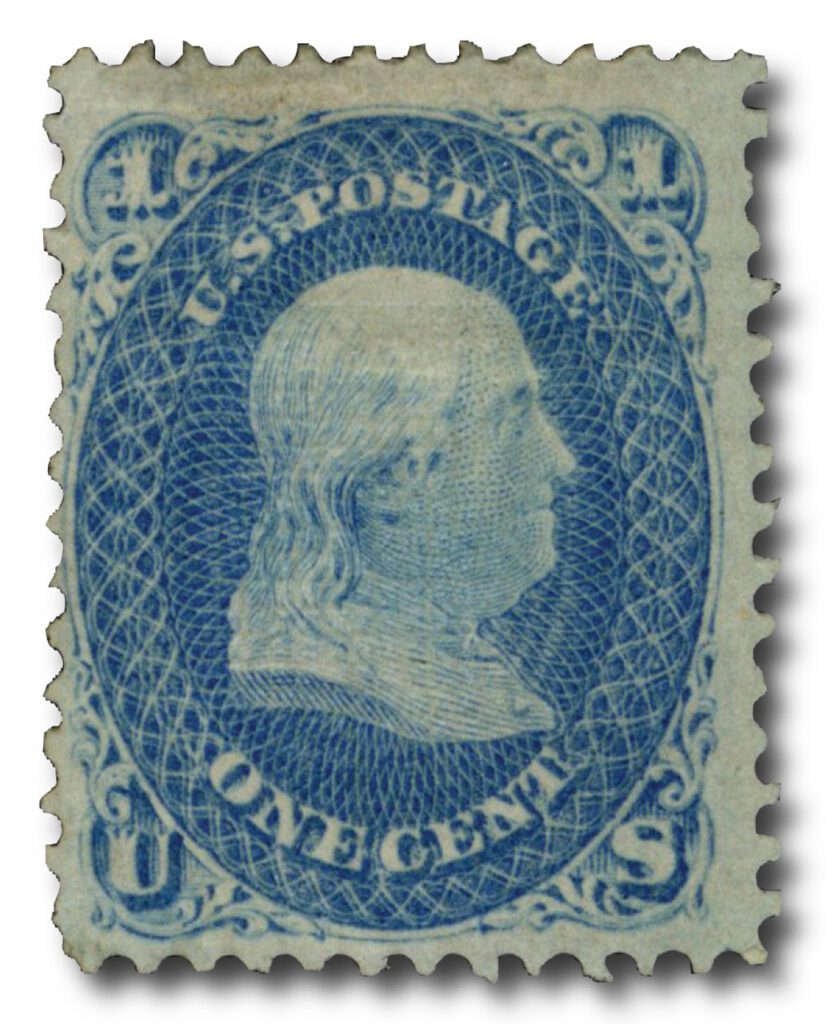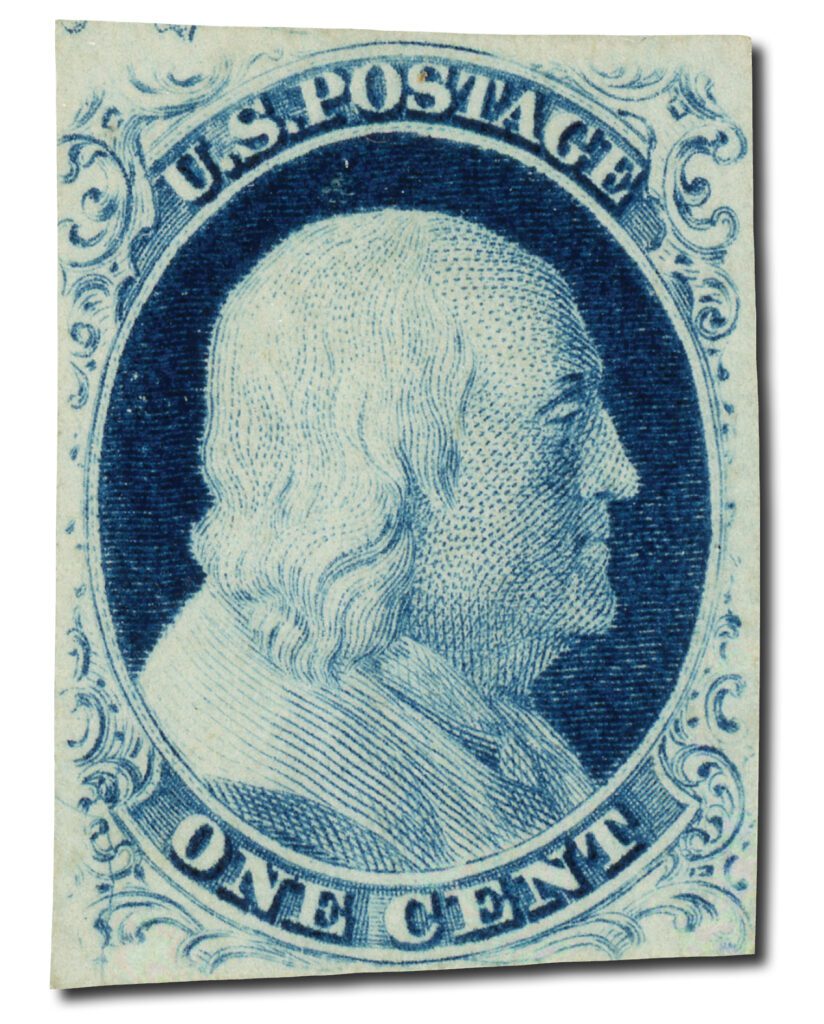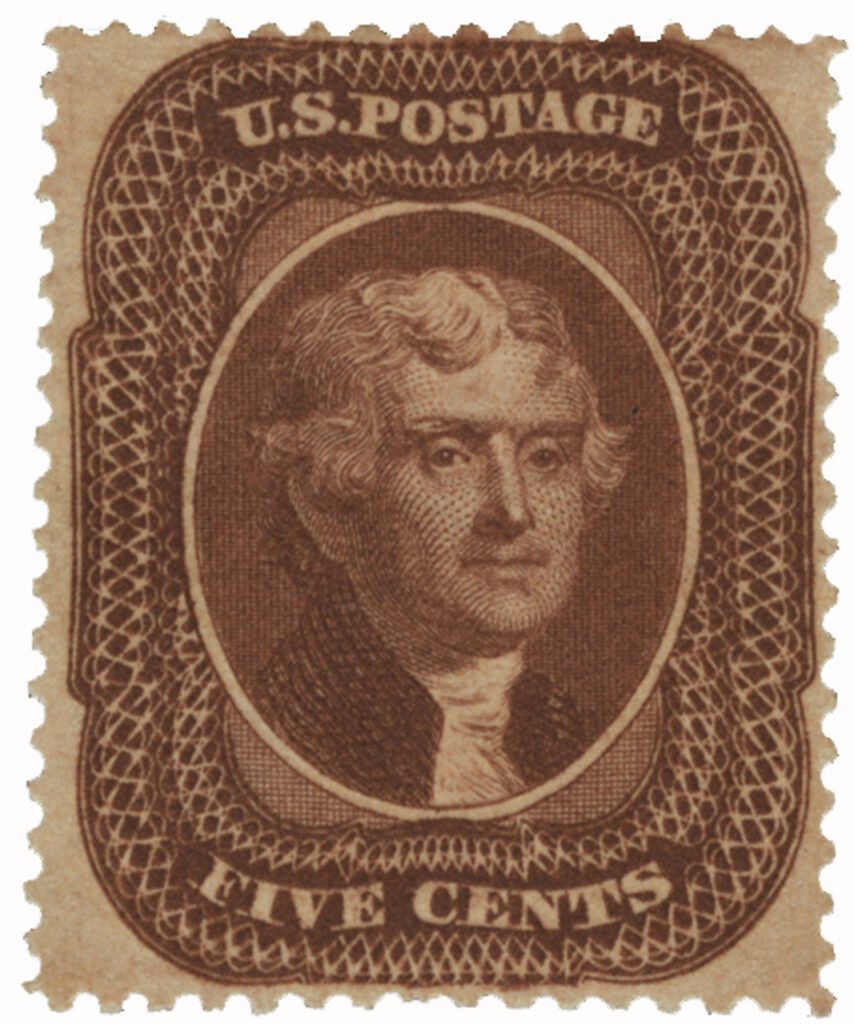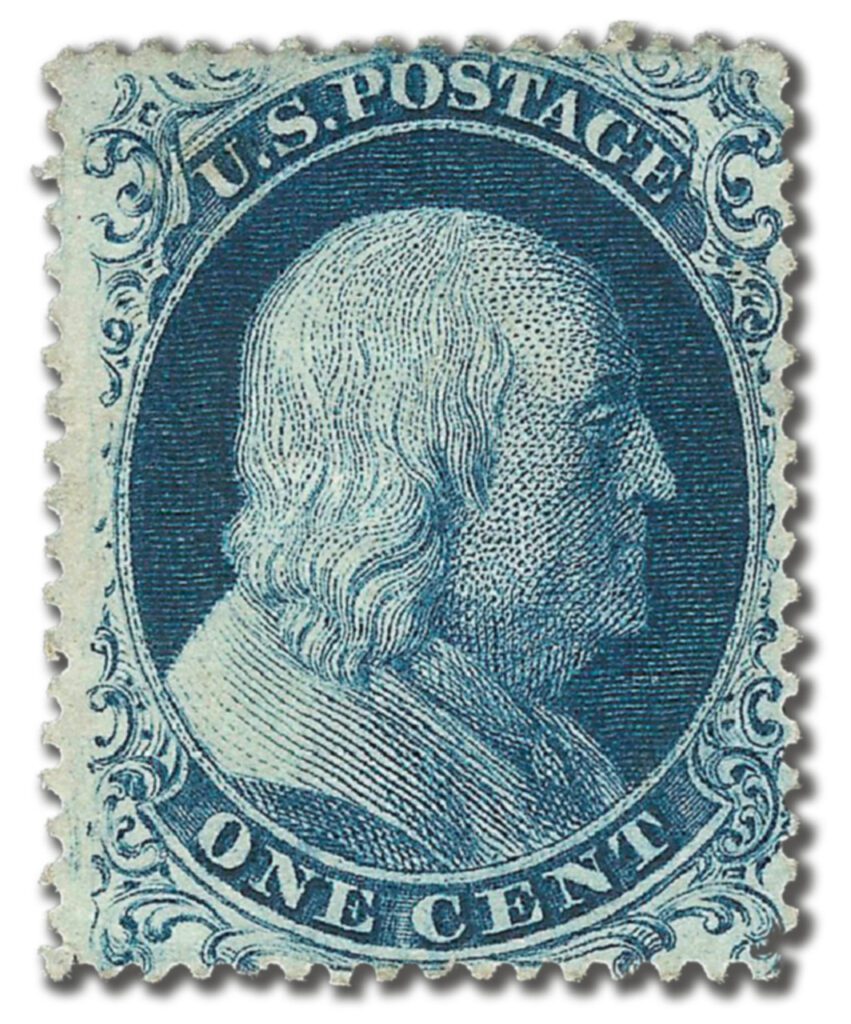United States Stamps
Originally posted March 9, 2011
Because of its familiarity to most American philatelists, we tend not to appreciate just how difficult collecting United States stamps is compared to collecting the stamps of most other countries. The reason of course is the Scott Catalogue and the vast number of varieties and special issues that Americans collect that the collectors of other countries don’t have to worry about. And we are not talking about varieties (every country has those), but about major catalog numbers that the major stamp albums have spaces for. Begin with the 1¢ 1851 issues (Scott #5-9). There are seven major catalog numbers, all of which are technical transfer varieties that exist because of the vagaries of intaglio printing and the difficulties that the printers of the stamps had in transferring the subject die to the sheets. In no other country do such varieties attain major number status even within the specialized catalogs of their own country.
The 1857 issue repeats the 1¢ 1851 problem and adds major catalog numbers for some pretty subtle shade varieties of the 5¢ stamp (#27-30A). There are the Reissues(#3-4, 40-47) which were sold to collectors at a later date and which have achieved catalog status. And the so called August Issues (#62B, 70c) which were really essays that were issued, in very limited quantities, and perhaps by accident, for postal use.

There are only two known examples of the Z Grill variety of this stamp (US #85A). One is in the possession of the Smithsonian National Postal Museum, meaning only one private collector at a time can own a complete collection of US postage stamps.
Next we have the grills, a failed anti-stamp-reuse experiment that results in thirty major Scott numbers that are simply varieties of the grill (and many of them rarities). Only one other country ever used grills (Peru) and the grills were on unique stamp issues so that the grilling created no new varieties on their own.
By 1870, by my count, the Scott Catalogue requires collectors, who wish for completion, to purchase at least fifty generally rare and often very expensive stamps if they want to call their collections complete. This is true of no other country, not even German area philately, which has long been regarded as about as specialized as one can get. The difference is that the Michel specialized catalog for Germany lists major numbers which are the major stamp types, with innumerable varieties following. The Scott Catalogue list such varieties as major numbers making the decision for each collector about whether they need the stamps or not.



